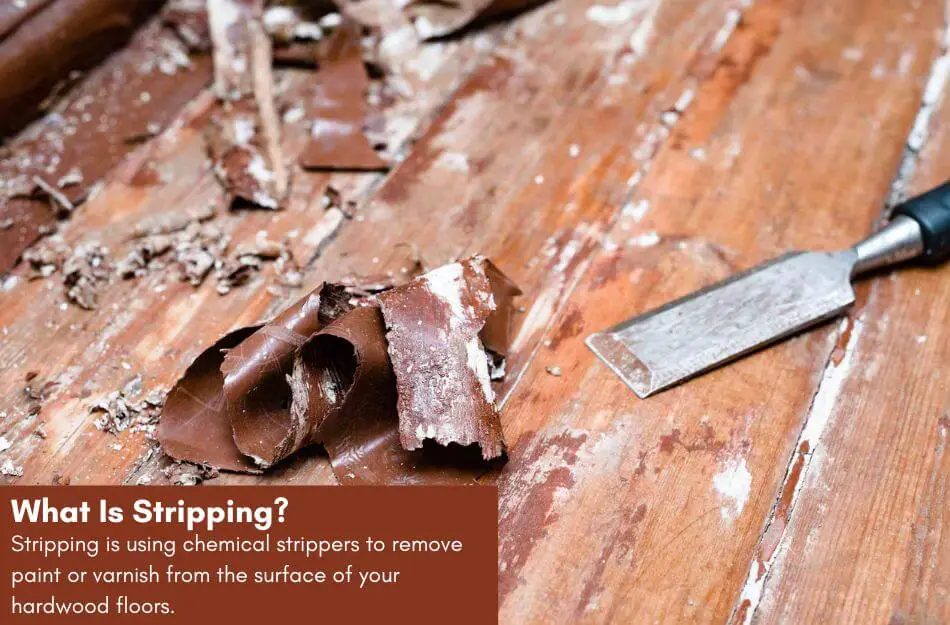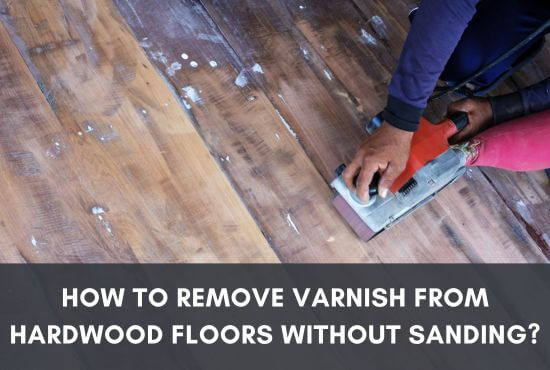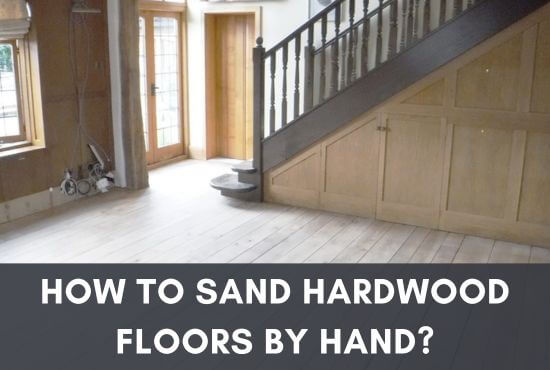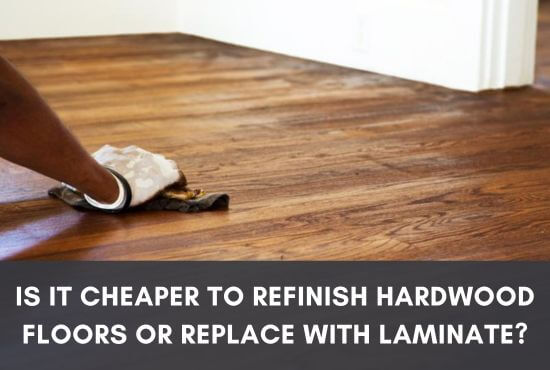If you are close to the refinishing stage for your hardwood floors, removing the existing paint or varnish is a crucial part of the process.
However, choosing the right way to do so can be a bit confusing if you are new to this concept.
With both stripping and sanding being equally popular and attracting diverse perks, it can be hard to make a decision.
However, we are here to help and today you will find the most suitable process among the two.
Stripping wood floors involves using chemicals or a sander to remove old finish. Sanding, on the other hand, uses abrasion to level the surface. Choose stripping for heavy coatings, while sanding for surface-level rejuvenation. Consider wood’s condition and desired result for the best approach.

Both of these procedures are equally effective and if you want to know more about each one of them, keep on reading.
Table of Contents
What Is Sanding?
Sanding refers to using sandpaper or sanding machines, which grind down the surface of the wooden planks to make them smooth.
Moreover, this process is also used to remove stains, paint or varnish removal from the surface of the hardwood floors.

This can expose the wood and makes the natural grain appear more fuller.
Sanding can be done in various stages and with the help of many tools.
You have various equipment, from mere sandpaper to rub the floors to large drum sanders that can sand the floors in under an hour. Go through full guide on sanding hardwood floors using drum sanders.
Moreover, sanding the floors can help remove stubborn stains and unwanted paints and aid in refinishing so that the hardwood floors do not get damaged extensively and can be refreshed once every few years.
Sanding your hardwood floors is followed by a cleaning session which involves the removal of all the sawdust and shavings from the hardwood floors.
Once done, you can move on towards coating the floors with a fresh stain of a different color to change the look.
You might also finish the floors afterwards to give them a suitable protective coating against wear and tear factors and increase their strength and longevity.
What Is Stripping?
Stripping is using chemical strippers to remove paint or varnish from the surface of your hardwood floors.
Strippers are either liquid or gel-based as these products can aid in varnish or paint removal from hardwood floors without sanding or damaging the wood with bleaching methods.
Stripping is an easy process which involves applying chemical solvents on the floors and leaving them for a certain time until they can be removed.

Once the time passes, you can remove them and the paint/varnish underneath to expose the bare wood for any process that you might want to do further.
Using strippers is a safe method for your wooden floors if you are concerned about that. Besides, it is also very easy and cheap.
The process is so simple that anyone can execute it after a few minutes of reading and understanding it.
If you are refinishing your hardwood floors, you can easily use stripping as an alternative to sanding if you want to and follow up by staining or sealing hardwood floors.
Stripping Vs. Sanding Wood Floors
If you are worried about choosing between both methods, rest assured as we will provide you with an in-depth comparison of both procedures so you can choose the best one for you.
Stripping Pros & Cons
One of the greatest benefits of using strippers is that they are very cheap and affordable compared to conventional sanding costs.
Moreover, they are quite easy to use and apply, which makes the entire process hassle-free.
There are mainly two types of strippers: liquid/gel and chemical strippers. The latter consists of various chemicals, while the gel strippers are usually made of citrus-based elements which work as acidic agents to dissolve and corrode the finish.

Another advantage of using strippers is that they yield results quite quickly. Regardless of the type of stripper you are using, you can finish the entire process of coating in 1 hour.
Using chemical strippers can limit you to one coat as they are stronger, while its counterpart requires 2-3 finishes.
However, there are some disadvantages to the process too. Chemical strippers can release toxins and VOCs similar to polyurethane finishes, which can harm your health.
Besides, it can also affect the health of your family members and pets.
Moreover, using gel strippers might not put you up in such a tight spot as it does not release toxins, but it certainly requires the floors to be rinsed with water.
This is necessary to ensure that the stripper has been removed completely. However, excessive water use on the floors can damage them and lead to crowning or buckling in the future.
Lastly, using the strippers does not mean you will have 100% paint or varnish removal from the hardwood floors.
There will always be areas with some substance left on the floors. This will have to be removed using a scraper to clean the surface and ensure proper completion of the process.
Sanding Pros & Cons
Sanding is an excellent way to remove varnish or paint from your hardwood floors if you want top-notch efficiency from the procedure.
Performing sanding on your floors has many benefits you might not be aware of.
For instance, sanding gives you more control over the process than stripping, where you don’t have any control over the process once the solvents have been applied.

Moreover, with the added control, there are fewer chances of mistakes and accidents.
Unlike stripping, sanding prevents uneven surfaces on the hardwood floor as you can guide the machine to whichever point you want and stop immediately if something goes wrong.
However, sanding also has some drawbacks, which you must be aware of. Firstly, excessive sanding on your floors is always risky as the machine can over-sand the floors.
This might result in weaker floors that have been sanded more than required.
Moreover, sanding machines are not good for all purposes; sanders that target edges or corners better will not provide effective coverage for the main area on the flooring, and vice versa.
This might result in using a combination of machines that can be costly and difficult to manage.
In addition, the general overall cost of sanding your hardwood floors is way too high compared to using strippers for the purpose.
Even if you sand the floors yourself, you will still have to bear the electricity costs and rental charges of the machinery and other relevant equipment.
Which One Is Better?
If your focus is budget-management and you want an affordable solution, stripping is the best solution for you.
However, if budget is not an issue for you, we would suggest that you choose sanding whatsoever.
But, remember that it is your decision and you must not let any professional service or individual manipulate you into changing your decision.
Calculate all the factors and keep in mind the condition of your floors and then decide accordingly to choose what is best for you.
Final Words
Choosing between stripping and sanding can be a difficult task especially if you are new in the flooring industry.
Therefore, it is always recommended to check the condition of your hardwood floors and see if you have enough time and budget for sanding.
If not, there is nothing wrong with choosing stripping as it is a safe and effective method. Therefore, make sure you follow the points mentioned above and make your decision wisely.

As a co-creator of FlooringFlow.com, Emma Sophia comes on board to answer all your questions related to any flooring problems. Together with John Henry, she’s gained extensive experience in fixing many flooring problems in their own house as well as in friends and family’s. Now, she wants to share her knowledge that she gained during floor remodeling, restoring, and DIY projects.






